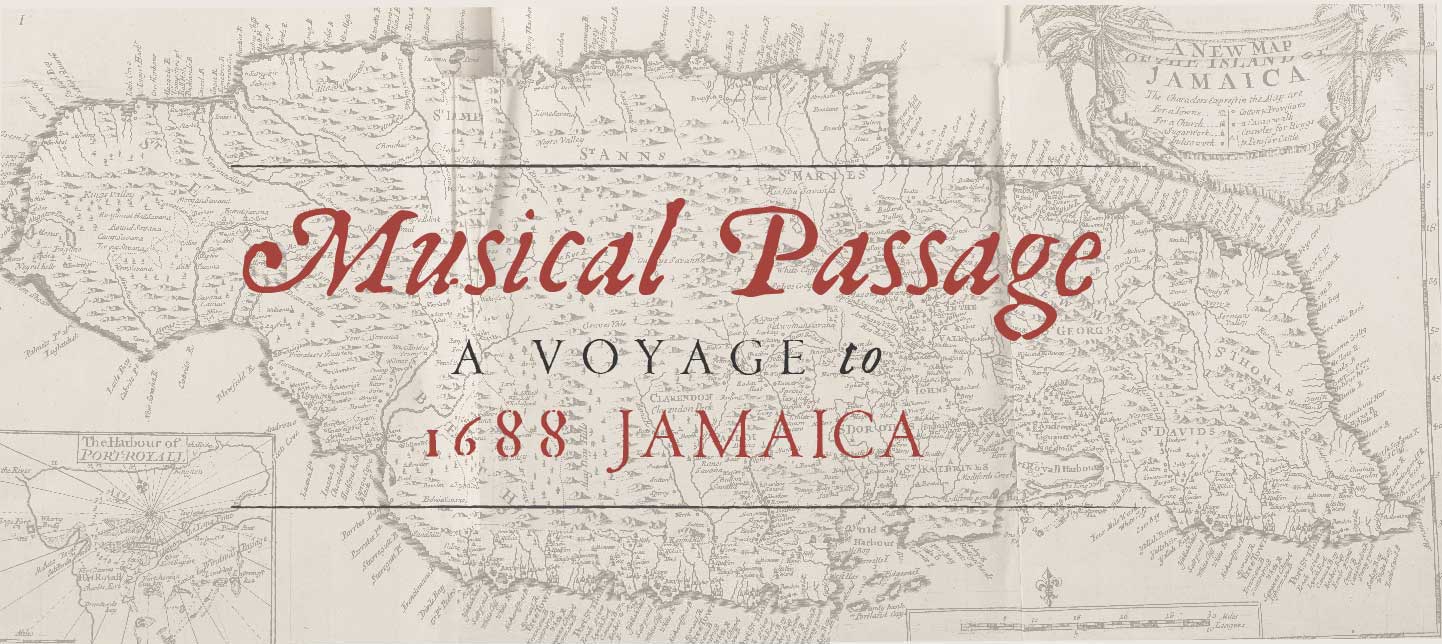Musical Passage. http://musicalpassage.org/#. Created by Laurent Dubois, David Garner, and Mary Caton Lingold. http://musicalpassage.org/#about. Reviewed February 16, 2020.
The Musical Passage is a digital project that offers a musical transcription of early African diasporic music by enslaved Africans undertaken by slave ships to the West Indies during the Atlantic slave trade. The site also presents historical information relating to the Middle Passage as it simultaneously entwines the musical reference to the narrative. The project gives an interpretation of a rare artifact obtained by Hans Sloane’s 1707 Voyage to the Islands of Madera, Barbados, Nieves, S. Christophers, and Jamaica containing musical pieces during this historical period. The Musical Passage offers audio renditions aimed at reconstructing the sound, rhythm, and musical composition and arrangement to these early musical masterpieces. The focus resides in decoding and dissecting five musical pieces of which differ in musical style, arrangement, and tempo. Additionally, each piece of music whether instrumental or vocal gives a supplementary perception of the backstory of the songs and a conception of the instruments used at the time.
The home page of the site opens with a digital image along with metadata of Hans Sloane’s document which contains the earliest transcription of African Caribbean music as Sloane interpreted and invites the visitor to listen to the musical arrangements by clicking on the play icon. The music incorporates ambient sound of the ocean tide as the music plays giving the audience a feeling of Caribbean ambience. Users can navigate three options near the play icon which include tabs explore, read, and about. Clicking on the explore tab does not bring about additional information. As a matter of fact, nothing changes on the home page when clicking the exploration tab. Secondly, clicking the read tab will allow the user to navigate through a digital design similar to ArcGIS StoryMaps using HTML5, CSS, and libraries jQuery, Bootstrap, and FullPage.js.
The read option allows for three portions of extensive informative history concerning Han Sloane’s artifact, a book entitled Voyage to the Islands, the Middle Passage, and the history of five pieces of seventeenth century sheet music.The first portion describes how Sloane traveled to the Caribbean, specifically Jamaica, and observed the cultural practices of the enslaved African population in addition to his study of the island’s ecology. During Sloane’s time in Jamaica, he cataloged plants and animals on the island while collecting cultural artifacts and scientific specimen which can now be seen at the British Museum. The second portion is comprised of historical content of the Middle Passage and its effects on enslaved Africans. The passage depicts the cultural influence brought from their native Africa to include practices, rituals, customs, and music which influences present day vocal and instrumental sounds attached to the expression of emotion.
Finally, the third portion contextualizes the history, musical notation, engravings of some of the earliest depictions of instruments, and the song interpretation of each musical piece. The selection clarifies that the rendition of the music is by the project’s inference as it is difficult to know the precision of what the music originally sounded like. The passage invites their users to contribute their own musical interpretations for the purpose of inspiring future improvisations. Furthermore, towards the end of the narration, there is a solitary assessment of the five musical compositions illustrating differences in notation, melody, musical scale, vocal pattern, and lyric analysis. The metadata includes an image of Hans Sloane, natural history engravings of mollusk shells from his book, an engraving of three instruments he collected (no longer in existence), and five images of one bar of music for Angola, Papa, Koromanti 1, Koromanti 2, and Koromanti 3.
The about tab redirects the user to learn more about the project, its mission, project design details, musical responses to the project, collaborations, biographical information on the project’s creators, acknowledgments, a digital humanities bibliography, and further readings. The page is very detailed in its mission for the project in addition to the remaining about topics. Moreover, the project encourages its users to give feedback on their efforts or contribute further interpretations on the musical material. It cites forms of contact through twitter, their website, or through email. It also recommends that the user stream the recordings through Soundcloud. The musical response paragraph intrigued me the most as it provided additional metadata through the use of YouTube to show a video of a group of musicians invited by the Institute of Jamaica in Kingston to give a live improvisation of this music in front of an audience.
All things considered; the digital project Musical Passage is a great project! It was enjoyable learning about the inception of music and its origins considering the influences it provides to the evolution of music as it exists today. It rooted from unfortunate events by way of the Middle Passage and yet through so much pain and suffering, enslaved Africans were able to create and beautify the art of music as a form of storytelling. The diffusion of their African culture and traditions using music immortalized their place as trail blazers and pioneers of musical expression and demonstration. The project itself embellished this information providing both visual and audio support to transport the user to seventeenth century Jamaica. The goal in these digital projects are to inform and supply a deeper appreciation for the history produced by their work and this project did just that.

